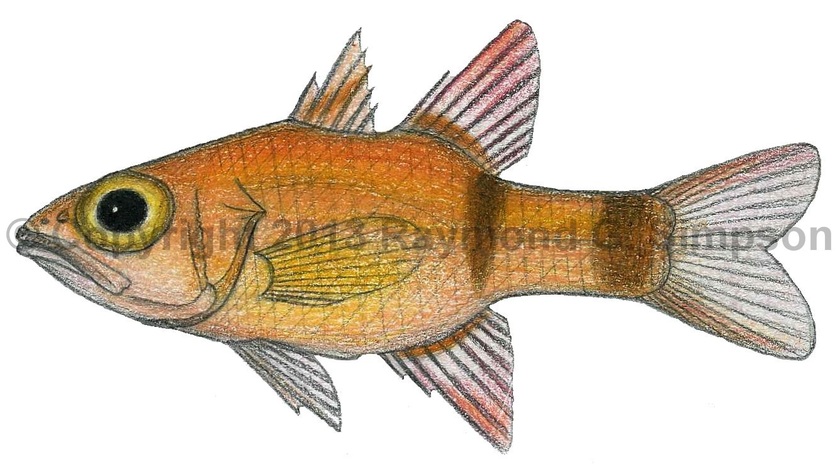
Common Name
Roughlip Cardinalfish
Year Described
Böhlke & Randall, 1968
Identification
Dorsal Fin: VI, I-9
Anal Fin: II, 8
Pelvic Fin: I, 5
Pectoral Fin:
Gill Rakers: 16-18 (usually 17) on lower limb
Vertebrae: 10 precaudal, 14-15 caudal
A small fish with a fairly robust and moderately compressed body. Eye is large and the snout short. Mouth is fairly large and oblique, with the lower jaw slightly protruding. Both jaws, palatine, and vomer with narrow bands of villiform teeth (no canines). Teeth extend onto outer premaxilla well outside mouth. Preopercular edge with a serrate margin. Preopercular flap does not extend past the preopercular rear margin. There are two dorsal fins. The caudal fin is emarginate. Body scales ctenoid.
Color
Body pale to dark red, often with faint bluish opalescence on the flanks and yellow on the dorsum. A faint opercular spot often present. A thick black band present on the caudal peduncle (without dark borders) and another rectangular band from the second dorsal to the anal fin base. The area in between them is often paler than the body color. Eye dark with yellowish and blue sheen. Fins are reddish, with darker red pigment at the base of the second dorsal and anal fins, fin lobes, and first dorsal fin.
Size
Maximum size to 90mm TL.
Habitat
Coral and rocky reefs (<30m), mostly in crevices.
Range
Scattered records from Bermuda, Bahamas, the Caymans, Cuba, and Belize. Probably widespread in the Caribbean.
References
Gon, O. 2002. Apogonidae (pp 1386-1391). In: Carpenter. 2002. The living marine resources of the Western Central Atlantic. Vol. 3: Bony fishes part 2 (Opistognathidae to Molidae), sea turtles and sea mammals. FAO Species Identification Guides for Fisheries Purposes. American Society of Ichthyologists and Herpetologists Special Publication No. 5.